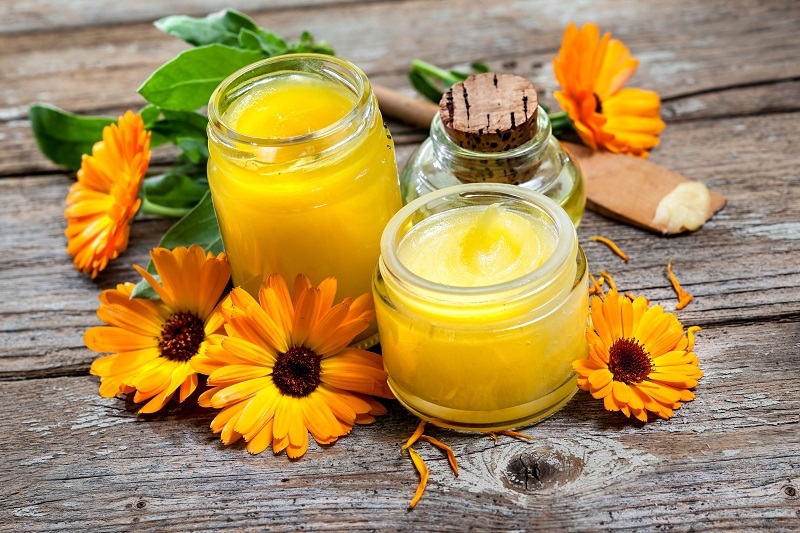Nurture with Love: A Heartfelt Guide to Orchid Care
Posted on 03/07/2025
Nurture with Love: A Heartfelt Guide to Orchid Care
Are you ready to embark on a beautiful journey with orchids? Caring for these breathtaking plants is more than just a hobby--it's a nurturing experience that brings tranquility, beauty, and accomplishment into your home. Whether you're a beginner or a seasoned green thumb, nurturing orchids with love is the secret ingredient to helping these exotic beauties bloom and thrive.
Why Orchids Capture Our Hearts: The Allure Behind the Petals
Orchids have fascinated plant lovers for centuries due to their ethereal blossoms, diverse colors, and intricate forms. From the common Phalaenopsis (moth orchid) to rare collector's specimens, caring for orchids is as rewarding as it is enchanting.
- Diverse Varieties: Over 25,000 species and 100,000 hybrids exist, making orchids some of the most diverse plants worldwide.
- Longevity: With proper orchid nurturing, these plants can bloom year after year, some living for decades.
- Symbolism: Orchids symbolize beauty, love, and luxury in cultures around the globe.
Understanding Orchid Needs: The Foundation of Loving Orchid Care
The first step in successful orchid care is understanding your plant's unique requirements. Orchids differ from most houseplants and have special needs. Nurture with compassion, and your orchids will respond with glorious blooms.
The Best Orchid Varieties for Beginners
- Phalaenopsis (Moth Orchids): Known for long-lasting flowers and straightforward care.
- Dendrobium: Gorgeous canes and prolific flowering after a little practice.
- Cattleya: Thrives in bright light with showy, fragrant blossoms.
The Importance of Light: Illuminating the Orchid's World
Just as love nurtures the soul, light nurtures the orchid. Orchids evolved beneath tropical canopies, requiring filtered yet bright light. Too much direct sun can scorch the leaves, while too little will halt blooms.
How to Provide Ideal Orchid Light
- East or West Windows: Perfect for most orchids with gentle, indirect morning or afternoon sunshine.
- Filtered Sheer Curtains: *Soften harsh rays with curtains or blinds to mimic a rainforest's dappled light.*
- Artificial Grow Lights: Ideal for homes with limited natural light.
Pro Tip: Orchid leaves should be a vibrant, grassy green--not dark or yellowed. Dark green suggests too little light; yellowish or red-tinged leaves mean too much.
Watering Wisdom: Quenching Your Orchid's Thirst with Love
Watering is where many orchid lovers feel uncertain. Remember, mistakes in orchid care often begin with overwatering. Most orchids are epiphytes, thriving on trees in humid jungles, not with roots buried in soggy soil.
How to Water Orchids Properly
- Check the Roots: Healthy roots are green and plump. If they appear whitish and shriveled, your orchid needs water.
- Let the Potting Medium Dry Out: The surface should be dry to the touch before the next watering.
- Water Deeply, but Infrequently: Douse thoroughly, allowing water to run out the drainage holes.
- Avoid Water in the Crown: *Standing water in the leaf axils can cause fatal rot.*
Tip: In most indoor conditions, watering once a week is sufficient, but always check your specific orchid's needs.
Humidity and Air: The Breath of Orchid Life
Orchids love humidity! In their native environments, air is moist and rich. Indoor air, especially in heated homes, can be dry and stressful for orchids.
How to Boost Humidity for Happy Orchids
- Misting: Use a fine spray to slightly dampen foliage (avoid water pooling).
- Humidifier: Place one near your orchids to keep air moist, especially in winter.
- Humidity Trays: Fill a tray with pebbles and water, then set the orchid pot above (not in) the water.
- Grouping Plants: Orchids grouped together create a mini humidity bubble.
Potting the Orchid: Soil, Pots, and Re-potting with Care
Unlike other houseplants, orchids don't grow in standard soil. They require a special orchid potting mix that provides excellent drainage and aeration. This is essential for nurturing healthy orchid roots.
Choosing the Best Orchid Pots and Mix
- Orchid Bark: The most popular medium, ensuring strong root aeration.
- Sphagnum Moss: Keeps moisture near roots, used in drier homes.
- Clear Pots: Allow you to monitor root health and moisture.
- Drainage Holes: Absolutely critical to prevent root rot.
Re-pot your orchid every 1-2 years, especially when the potting mix breaks down or roots overflow the container.
Feeding with Affection: Orchid Fertilizing Tips
Like any loving relationship, orchids appreciate a thoughtful feeding schedule. Fertilizing regularly ensures lush growth and beautiful blooms.
How to Fertilize Orchids
- Use an Orchid-Specific Fertilizer: Balanced blends (20-20-20) or those labeled for orchids provide ideal nutrients.
- Dilute to Half Strength: More is not always better--diluted fertilizer prevents root burn.
- "Weakly, Weekly": Feed small amounts every week during the growing season (spring and summer).
Encouraging Orchid Blooms: Sharing Love Through Blossoms
What makes orchids so rewarding is their spectacular blooms. Yet, sometimes despite your best efforts, orchids refuse to flower. Patience, consistent care, and a few expert tips can make all the difference.
Secrets to More Orchid Flowers
- Cool Night Temperatures: A drop of 10-15?F at night helps trigger flower spikes.
- Proper Rest Period: After blooming, let your orchid rest with less water and cooler temps.
- Don't Move or Rotate: Orchids set blooms based on light direction; keep them facing the same way.
Remember: Some orchids bloom once a year, others multiple times. With patience and gentle attention, their performance will improve each season.
Recognizing and Healing Orchid Problems
Even the most devoted orchid nurturer can encounter challenges. Fortunately, with attentive observation and quick action, most issues can be gently resolved.
Common Orchid Care Problems and Solutions
- Yellow Leaves: Often caused by overwatering or too much light. Adjust your care routine accordingly.
- Wrinkled or Mushy Roots: A sign of root rot. Remove damaged roots and re-pot in fresh orchid bark.
- Bud Blast (Falling Buds): Usually due to sudden temperature/humidity changes. Keep orchids in a stable environment.
- Pest Infestations: Wipe leaves with mild soapy water or use insecticidal soap (especially against scale or mealybugs).
Always examine your orchids regularly for signs of distress--a tender touch can prevent bigger problems.
Creating a Serene Sanctuary: More Than Just Plant Care
You're not just growing a plant; you're cultivating a relationship. The daily ritual of tending, observing, and nurturing your orchids with affection transforms not only the plant, but yourself.
- Find a Peaceful Spot: A dedicated orchid table by a window or a bathroom ledge with gentle sunlight.
- Practice Mindful Watering: Take moments to watch, reflect, and enjoy the process.
- Celebrate Each New Bloom: Orchids remind us of nature's beauty and the rewards of patient, loving care.
Frequently Asked Questions: Orchid Care for Every Nurturer
How often should I water my orchid?
Most orchids need watering when their potting mix is almost dry--usually once a week. Humidity, potting medium, and temperature will affect frequency.
Why are my orchid's leaves turning yellow?
This is commonly due to overwatering. Ensure the roots have aeration and never sit in water. Old lower leaves may yellow and drop naturally--no need to worry for one or two.
Can I grow orchids indoors without sunlight?
Yes! Artificial grow lights can effectively substitute for natural light, especially in winter or windowless rooms.
When do I repot my orchid?
Every 1-2 years or when the potting mix decomposes, roots crawl out, or after flowering. Always use a suitable orchid mix for best results.
My orchid isn't blooming. What should I do?
Check that your orchid has enough light, experiences a slight temperature drop at night, and is not over-fed. Some orchid types need a "rest period" after flowering to rebloom next season.
Nurturing Orchids: Love in Every Leaf
Orchid care is not just a checklist of tasks; it's an act of devotion. Each time you water, re-pot, or simply admire your orchid, you're building a deeper, more rewarding relationship. With affectionate attention and understanding, your orchid journey can become a lifelong passion. Let your love bloom as beautifully as your orchids themselves.
By practicing the tips in this heartfelt orchid care guide, you'll soon be rewarded with robust, thriving orchids and a serene, beautiful living space. The secret is simple: nurture with love, and nature will return your affection tenfold. Happy growing!







